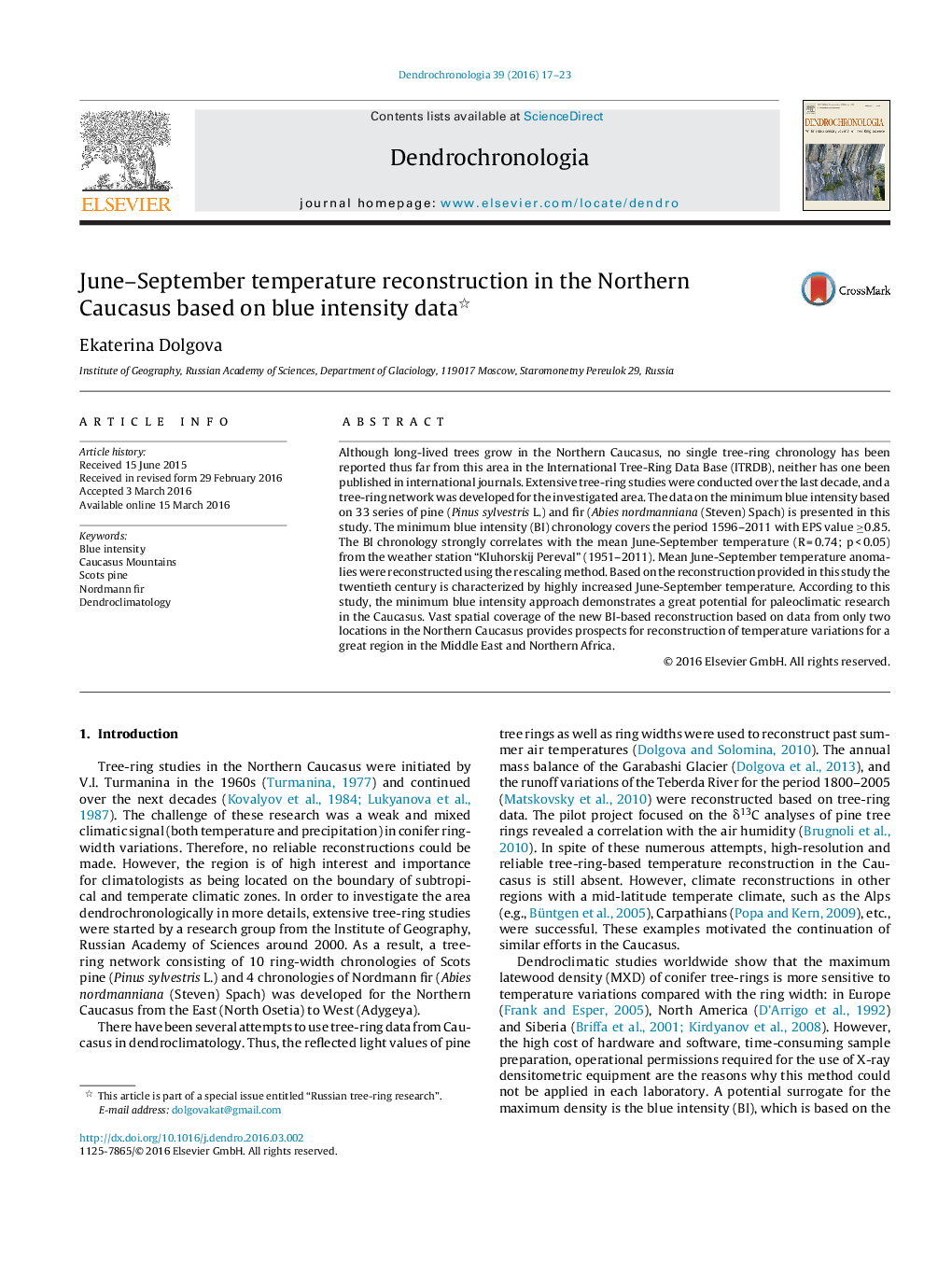| Article ID | Journal | Published Year | Pages | File Type |
|---|---|---|---|---|
| 85567 | Dendrochronologia | 2016 | 7 Pages |
Although long-lived trees grow in the Northern Caucasus, no single tree-ring chronology has been reported thus far from this area in the International Tree-Ring Data Base (ITRDB), neither has one been published in international journals. Extensive tree-ring studies were conducted over the last decade, and a tree-ring network was developed for the investigated area. The data on the minimum blue intensity based on 33 series of pine (Pinus sylvestris L.) and fir (Abies nordmanniana (Steven) Spach) is presented in this study. The minimum blue intensity (BI) chronology covers the period 1596–2011 with EPS value ≥0.85. The BI chronology strongly correlates with the mean June-September temperature (R = 0.74; p < 0.05) from the weather station “Kluhorskij Pereval” (1951–2011). Mean June-September temperature anomalies were reconstructed using the rescaling method. Based on the reconstruction provided in this study the twentieth century is characterized by highly increased June-September temperature. According to this study, the minimum blue intensity approach demonstrates a great potential for paleoclimatic research in the Caucasus. Vast spatial coverage of the new BI-based reconstruction based on data from only two locations in the Northern Caucasus provides prospects for reconstruction of temperature variations for a great region in the Middle East and Northern Africa.
